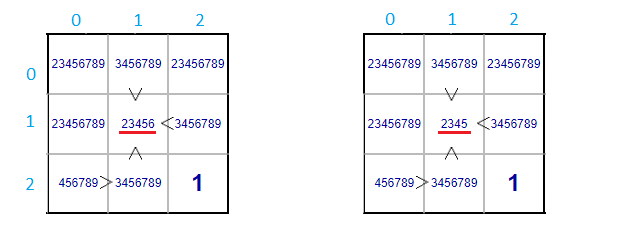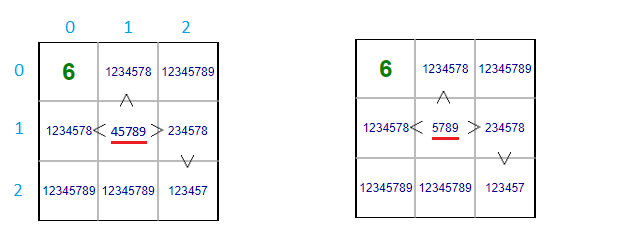Greater Sudoku Graph Reduction
In Greater Sudoku if a cell(x,y) has more than one greater peer cells say 'n' and in turn if any of that peer cells have 'm' greater peer cells on its own ,then the cell (x,y) can't have 'n+m' maximum values of possibilities that are present among all those greater peer cells.
An illustration for the above concept.

In the Rectangular block, the lesser cell (1,1) is having three greater peer cells (0,1), (1,2) and (2,1) and in turn here the greater peer cell (2,1) is having its own greater peer cell (2,0). Therefore the cell (1,1) can't have '4' maximum values-{6,7,8,9} as its possibilities. Since the values {7,8,9} are already removed according to the Greater Neighbor Reduction, now the value 6 is removed from the cell (1,1).
Likewise, if a cell (x,y) has more than one lesser peer cells say 'n' and in turn if any of that peer cells have 'm' lesser peer cells on its own, then the cell (x,y) can't have 'n' minimum values of possibilities that are present among all those lesser peer cells.

In the Rectangular block, the greater cell (1,1) is having three lesser peer cells (0,1), (1,0) and (1,2) and in turn here the lesser peer cell (2,1) is having its own lesser peer cell (2,0). Therefore the cell (1,1) can't have '4' minimum values-{1,2,3,4} as its possibilities. Since the values {1,2,3} are already removed according to the Greater Neighbor Reduction, now the value 4 is removed from the cell (1,1).
Algorithm Links
Consecutive Sudoku Algorithms
Greater Sudoku Algorithms



